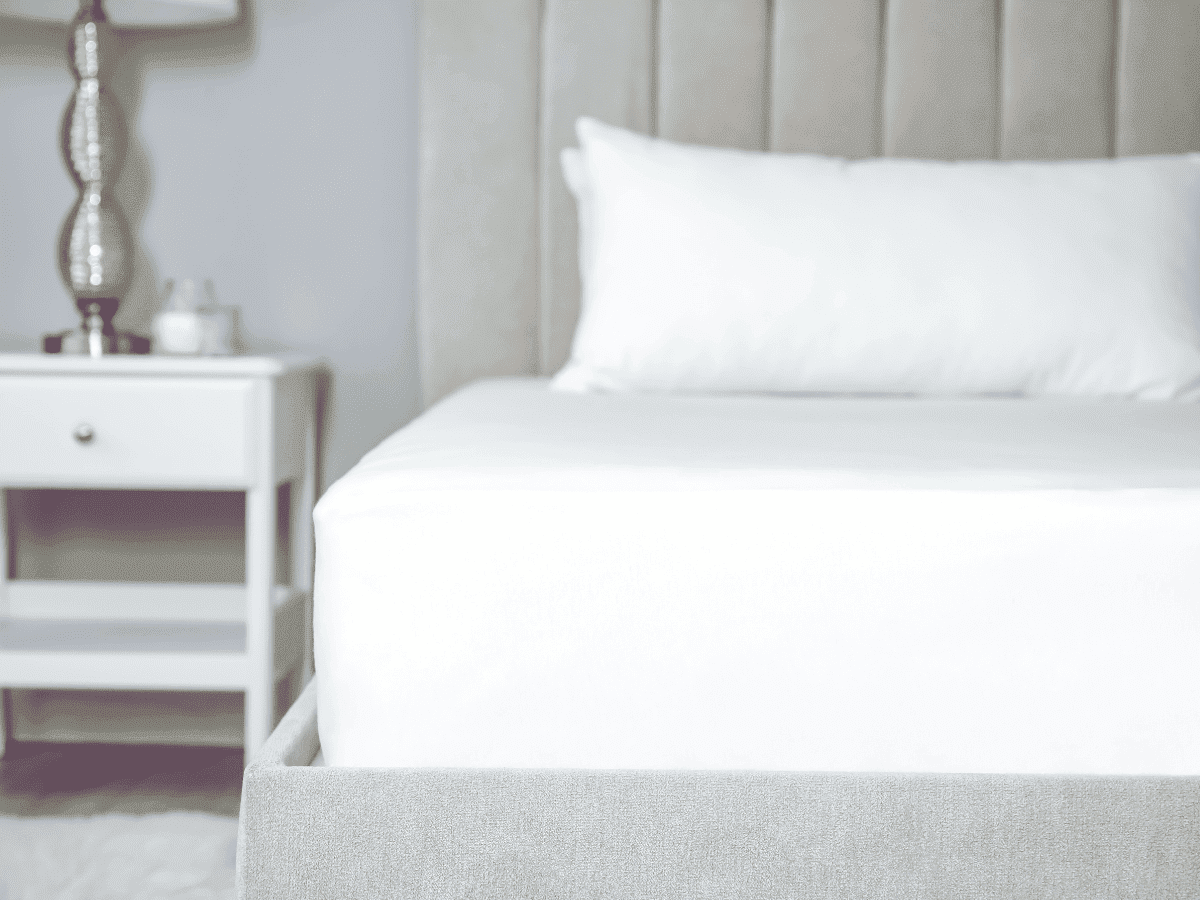
Foam Mattress Evolution: From NASA to Your Bedroom
When we think about a good night's sleep, what comes to mind? A darkened room, warm and cozy bedding, or perhaps a comforting nightlight? While all these factors contribute to sleep quality, the unsung hero of restful slumber is undoubtedly your mattress. Over the years, mattress technology has evolved significantly, with foam mattresses emerging as a popular choice for those seeking the perfect balance of comfort and support.
In this article, we'll explore the fascinating journey of foam mattresses, from their humble beginnings to today's cutting-edge sleep solutions. Whether you're a side sleeper, back sleeper, or toss and turn all night, understanding this evolution can help you make an informed decision about your next mattress purchase.
The Birth of Foam Mattresses
The story of foam mattresses begins in the 1950s when polyurethane foam first made its appearance in the bedding industry. This revolutionary material offered several advantages over traditional innerspring mattresses:
- Affordability: Polyurethane foam was relatively inexpensive to produce.
- Moldability: It could be easily shaped into various sizes and forms.
- Comfort: The foam offered a softer, more luxurious feel compared to springs.
However, these early foam mattresses weren't without their drawbacks:
- Lack of proper support: While soft, they didn't provide adequate spinal alignment.
- Tendency to sag: Over time, the foam would compress and lose its shape.
- Heat retention: The dense structure trapped body heat, leading to uncomfortable sleep.
Despite these limitations, the introduction of foam sparked a wave of innovation in sleep technology that continues to this day.
Memory Foam: A NASA Innovation
The 1960s brought a significant breakthrough in foam technology, courtesy of an unlikely source: the National Aeronautics and Space Administration (NASA). In their quest to improve seat cushioning and crash protection for astronauts, NASA scientists developed a remarkable material that would revolutionize the mattress industry: memory foam.
Memory foam, also known as viscoelastic foam, possessed unique properties that set it apart from traditional polyurethane:
- Body Contouring: The foam could mold itself to the sleeper's body shape.
- Even Weight Distribution: It distributed body weight evenly, reducing pressure points.
- Motion Isolation: The foam absorbed movement, minimizing disturbance from a partner's motion.
These characteristics made memory foam an instant hit in the consumer mattress market. Sleepers marveled at the unprecedented level of comfort and support, especially those suffering from chronic pain or joint issues.
However, early memory foam mattresses weren't perfect. Many users complained about:
- Heat retention: The dense foam structure trapped body heat, leading to uncomfortably warm sleep.
- Slow Recovery: Some memory foams were slow to return to their original shape, creating a "sinking" feeling.
- Off-gassing: New mattresses often emitted a chemical odor that took time to dissipate.
These challenges set the stage for the next wave of innovations in foam mattress technology.
Cooling Technologies in Foam
As memory foam mattresses gained popularity, manufacturers turned their attention to addressing the heat retention issues. This led to the development of several cooling technologies:
- Gel-infused Memory Foam
- Incorporates gel beads or layers within the foam
- Helps dissipate heat away from the sleeper's body
- Provides a cooler sleep surface
- Open-cell Structures
- Modifies the internal structure of the foam to improve airflow
- Allows for better heat dissipation throughout the mattress
- Maintains the contouring properties of memory foam
- Copper-infused Foam
- Utilizes copper's natural heat-conducting properties
- May offer additional benefits like antimicrobial protection
- Promotes a cooler, more hygienic sleep environment
- Phase Change Materials (PCMs)
- Absorbs excess heat when you're too warm
- Releases heat when you're too cool
- Helps maintain a consistent sleep temperature throughout the night
These innovations have made foam mattresses a viable option for hot sleepers and those living in warmer climates. Today, many cooling mattress options incorporate one or more of these technologies to ensure a comfortable night's sleep.
The Rise of Latex Foam
While memory foam was making waves in the mattress industry, another type of foam was quietly gaining a following: latex foam. Made from the sap of rubber trees, latex foam mattresses offered a unique set of benefits:
- Natural Resilience: Latex quickly bounces back to its original shape.
- Durability: These mattresses often last longer than other foam types.
- Eco-friendliness: Natural latex is a renewable resource.
- Hypoallergenic Properties: Resistant to dust mites, mold, and mildew.
Latex foam comes in two main varieties:
- Natural Latex: Derived entirely from rubber tree sap, it's the most eco-friendly option.
- Synthetic Latex: Made from petrochemicals, it's less expensive but lacks some of the benefits of natural latex.
Many manufacturers also offer blended latex, which combines both natural and synthetic materials.
While latex foam mattresses have many advantages, they also come with some considerations:
- Higher Cost: Natural latex mattresses are often more expensive than other foam types.
- Weight: Latex mattresses tend to be heavier, which can make them difficult to move.
- Firmness: Some people find latex mattresses too firm, especially if they're used to the "sinking" feeling of memory foam.
Despite these factors, latex foam has carved out a significant niche in the mattress market, particularly among eco-conscious consumers and those seeking a more responsive foam option.
Hybrid Mattresses: The Best of Both Worlds
As mattress technology continued to evolve, manufacturers began to ask: why choose between foam and springs when you can have both? This thinking led to the development of hybrid mattresses, which combine the best features of innerspring and foam designs.
A typical hybrid mattress consists of:
- A support core of innerspring coils
- Comfort layers made of memory foam, latex foam, or both
- Optional transition layers for added comfort and support
The benefits of this design include:
- Balanced Support: The coils provide traditional bounce and support, while the foam layers offer contouring comfort.
- Improved Air Flow: The spaces between coils allow for better air circulation than all-foam designs.
- Diverse Feel Options: Manufacturers can vary the thickness and composition of foam layers to create a wide range of feels.
Hybrid mattresses have become increasingly popular, especially among sleepers who find all-foam mattresses too soft or all-spring mattresses too firm. They're also a great option for couples with different sleep preferences, as they often strike a good balance between various needs.
The Future of Foam Mattresses
The evolution of foam mattresses is far from over. As technology continues to advance, we can expect to see even more innovations in the world of sleep. Some potential developments on the horizon include:
- Smart Foam Mattresses
- Embedded sensors to track sleep patterns and vital signs
- Automatic adjustment of firmness and temperature based on individual needs
- Integration with smart home systems for optimal sleep environments
- Eco-friendly Innovations
- Biodegradable foam materials
- Improved recycling processes for old mattresses
- Carbon-neutral manufacturing techniques
- Advanced Customization
- 3D-printed foam layers tailored to individual body shapes
- Modular designs allowing for easy replacement of individual components
- Dynamic support systems that adapt in real-time to changes in sleeping position
- Enhanced Materials
- Self-repairing foams that maintain their structure over time
- Antimicrobial foams that promote a healthier sleep environment
- Foam infused with natural, sleep-promoting substances
As these technologies develop, the goal remains the same: to provide the most comfortable, supportive, and restorative sleep possible.
Choosing the Right Foam Mattress
With so many options available, selecting the right foam mattress can seem daunting. Here are some factors to consider when making your choice:
- Sleep Position
- Side Sleepers: Often prefer softer, pressure-relieving foams
- Back Sleepers: May benefit from medium-firm foams for spinal alignment
- Stomach Sleepers: Typically need firmer foams to prevent sinking
- Body Type
- Lighter individuals may prefer softer foams
- Heavier individuals often need denser, more supportive foams
- Temperature Regulation
- Hot sleepers should look for cooling technologies like gel-infusion or open-cell structures
- Budget
- Determine your price range, keeping in mind that higher-quality foams often come at a premium
- Environmental Concerns
- If eco-friendliness is important to you, consider natural latex or foams with CertiPUR-US certification
Remember, many manufacturers offer sleep trials, allowing you to test the mattress in your home for a set period. This can be an excellent way to ensure you've found the right foam mattress for your needs.
From basic polyurethane to high-tech sleep solutions, foam mattresses have come a long way since their introduction in the 1950s. Today's options offer a perfect blend of comfort, support, and innovation, ensuring that everyone can find their ideal mattress for a restful night's sleep.
As we look to the future, it's clear that foam mattress technology will continue to evolve, driven by our ever-increasing understanding of sleep science and materials engineering. Whether you prefer the body-contouring hug of memory foam, the responsive bounce of latex, or the balanced feel of a hybrid, there's never been a better time to be in the market for a foam mattress. Sweet dreams await on the cutting edge of foam mattress technology!
